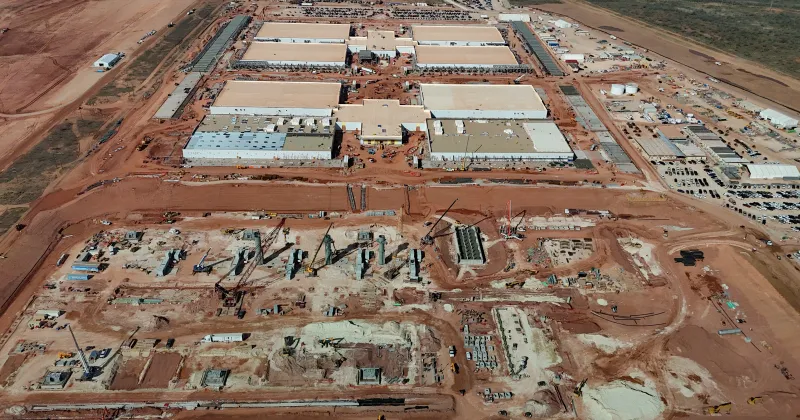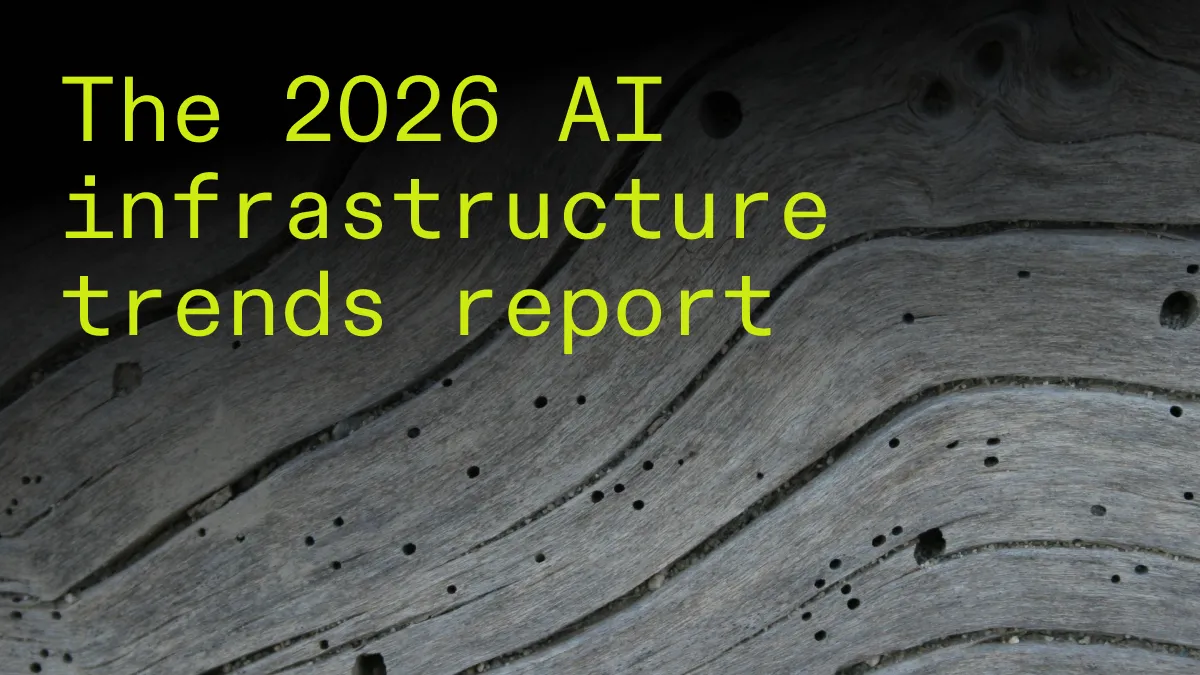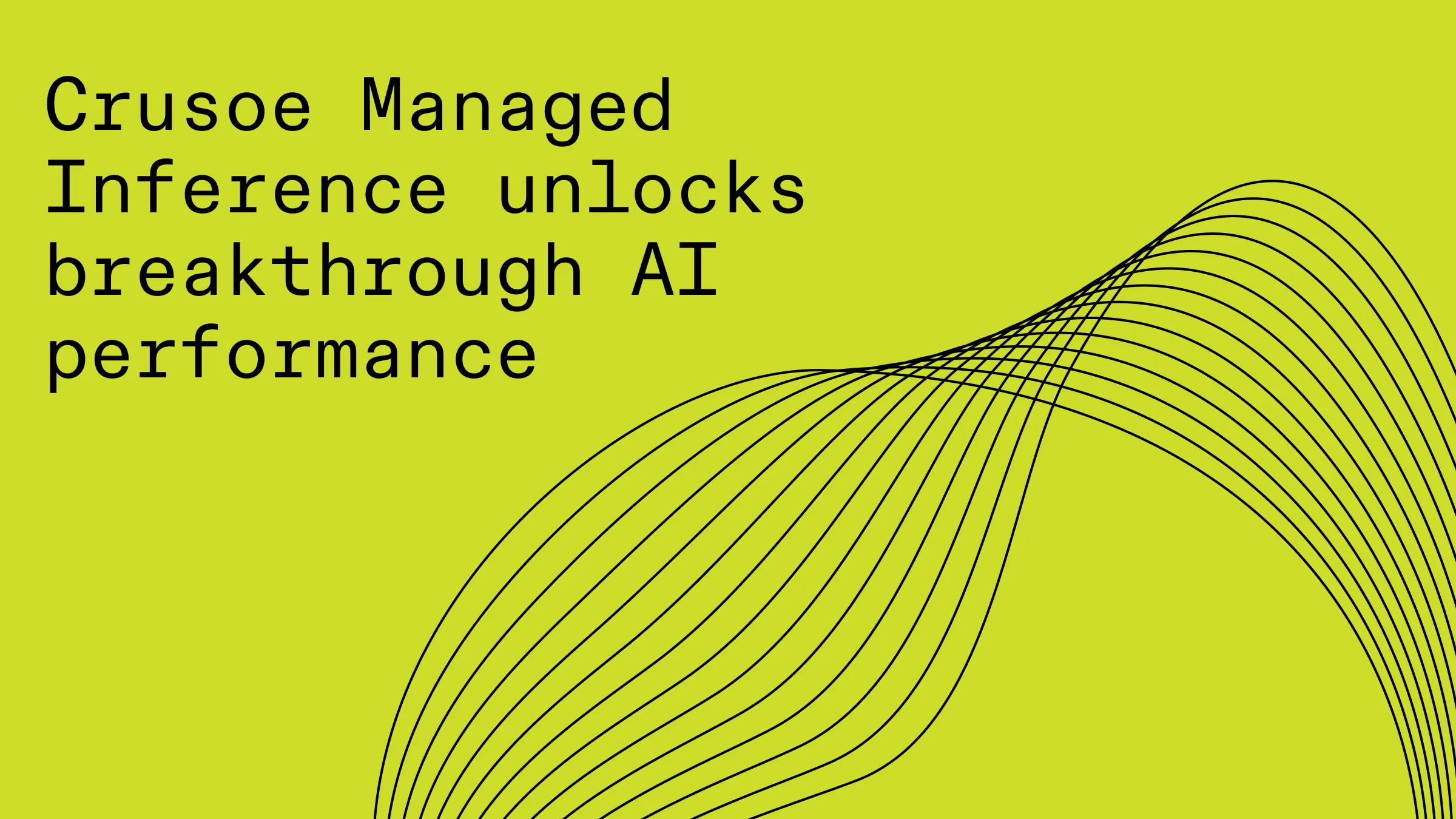An inside look at the Abilene AI data center
Go inside Crusoe's Abilene data center. Learn how we're building cutting-edge AI infrastructure with an energy-first approach, water-efficient cooling, and a deep commitment to community growth.

Crusoe's Commitment to Sustainable Development and Positive Community Impact
At Crusoe, we’re building the foundational infrastructure for the AI revolution, and our Abilene data center is a prime example. We believe in transparency and want to offer a look at how we’re constructing this facility .
Powering AI with An Energy-First Approach
Crusoe works to optimize our energy efficiency through unique power solutions. Our approach ensures robust, reliable power for AI compute while striving to minimize its environmental footprint within the real-world constraints of grid reliability.
Key Energy Facts
- The Abilene data center connects directly to the ERCOT grid, allowing us to primarily draw from the region's robust and growing supply of renewable energy.
- Abilene is one of the windiest locations in Texas, with abundant wind energy that is oftentimes underutilized and curtailed because supply outstrips demand for power.
- To ensure uninterrupted reliability and support grid stability for this critical AI infrastructure, we've strategically installed advanced natural gas turbines from GE Vernova. Ultimately, this plant will be used for backup power for the data halls, rather than traditional, higher-emission diesel generators.
- The turbines are equipped Selective Catalytic Reduction (SCR) technology – a leading emissions control system which removes emissions by transforming nitrogen oxides (NOx) into harmless water vapor and nitrogen through a catalytic converter, producing 90% lower emissions than traditional gas or diesel powered reciprocating engines with little to no methane slip. This makes these turbines a cleaner and more responsible choice for backup power than typical alternatives.
Water Wisdom: Our Commitment to Water-Efficient Cooling
Operating in West Texas, our team is acutely aware of the water considerations in the region and are working to optimize our water usage across the entire campus.
Key Water Facts
- We are building this project with closed-loop, non-evaporative liquid cooling systems, which are designed to significantly reduce our water footprint.
- Unlike traditional data centers that often rely on evaporative cooling towers, which continuously consume large volumes of water as it evaporates into the atmosphere, our Facility Cooling Water System (FWS) is a true closed loop. Water in the systems is continuously recirculated, with heat rejected via air-cooled chillers, so the facility does not consume any water as part of the heat-rejection process.
- This type of system is widely used in commercial and industrial cooling but is typically not deployed at this scale due to increased lifecycle and maintenance costs.
- Crusoe purposely selected this system due to its inherent water-conserving benefits, choosing to bear the extra costs in the interest of responsible water management.
- The initial fill for the closed-loop system in each of the eight buildings requires one million gallons of water, sourced from the municipal water supply. To put this in perspective, eight million gallons of water is equivalent to what a large (200,000 square foot) commercial office building uses in one year, according to the US Energy Information Administration.
- With diligent water quality monitoring and occasional treatment, a closed-loop system never needs to be entirely drained or refilled. It's in our operational best interest to keep the closed loop running continuously.
For routine maintenance and water quality management, including routine periodic pump and chiller maintenance and water sampling, a very small amount of water requires drainage and replenishment:
- The anticipated water usage for cooling system maintenance and quality purposes totals approximately 12,625 gallons per building per year. This is a remarkably low figure for a facility of this scale, representing just over 10% of the water an average American household uses annually (which is typically ~100,000 gallons per year according to the EPA).
The cooling pipes are primarily made of carbon steel and copper, selected for their durability and thermal efficiency. The system's water contains standard, highly diluted, non-hazardous corrosion inhibitors, common in industrial cooling and suitable for disposal to sanitary sewer.
- All water sourcing and wastewater management plans, including the rare event of a system drain such as for major maintenance, are subject to applicable permitting and approvals by relevant authorities.
A Committed Partner: Driving Economic Growth in Abilene
Crusoe is deeply committed to partnering with the Abilene community. We've worked in close collaboration with state and local leadership throughout the project’s development .
Key Community Impact Facts
- This project is creating significant job opportunities for the Abilene region. Today, we have more than 5,600 construction workers on-site every day, contributing directly to the local economy.
- We have prioritized local hiring, though the sheer volume of jobs and specialized roles do require bringing in specific expertise from across the nation.
- The Development Corporation of Abilene (DCOA) estimates that the first two buildings of the project will generate approximately $1 billion in direct and indirect economic impact to the City of Abilene over the next 20 years.
- With our expansion to a total of eight buildings, we anticipate scaling that economic impact by an order of magnitude, creating even greater economic opportunity for the Abilene community.
- Once fully operational, the data center will deliver up to 32% of the City of Abilene’s and up to 25% of Taylor County’s current FY 2025 Budgeted Property Tax Revenue.
The Abilene data center represents Crusoe's dedication to accelerating the abundance of energy and intelligence. We are proud to be building this critical infrastructure with an unwavering commitment to cutting-edge design and positive economic impact for the Abilene community. We look forward to continuing our partnership with the city and its residents as we help power the future.


